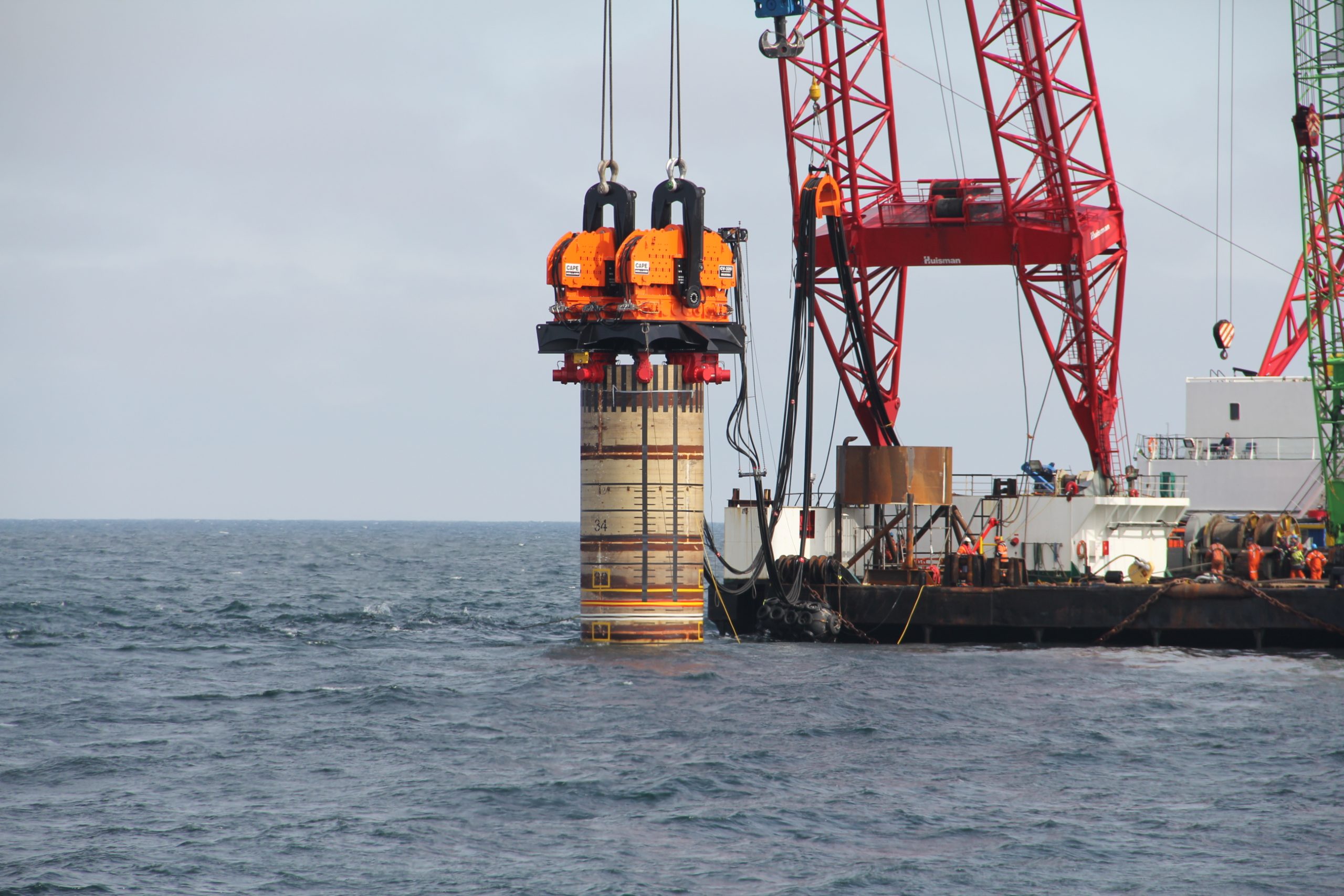The installation of offshore wind parks in the North Sea has only just begun. The GROW consortium, with TU Delft as research partner, has received 2.7 million euros to develop a less noisy way of installing the steel foundations.
Vibrating down piles causes less noise than hammering. (Photo: CAPE-Holland)
The GROW consortium partners, together with the TU Delft team consisting of Prof. Andrei Metrikine, Dr. Apostolos Tsouvalas and Maxim Segeren, aim to develop a gentler and more environmentally friendly way of installing foundations for offshore wind turbines. The consortium has received 2.7 million euros for the project ‘Gentle Driving of Piles’ from the Netherlands Enterprise Agency RVO.
The Dutch energy agreement (energieakkoord) will instigate an enormous growth in offshore wind energy over the coming years. The planning foresees an increase from 357 megawatt installed power in 2015 to 4,450 MW in 2023. Quite possibly, there will be another tenfold increase in offshore wind parks before 2040. What does that mean for life underwater?
‘Hammering the foundations for offshore wind turbines produces a lot of noise, resulting in very high sound levels in the surroundings of the hammering location,’ says a report on the environmental effects of offshore wind installations by Rijkswaterstaat. ‘Depending on the distance, marine mammals (like seals and harbour porpoises) can suffer temporary or permanent hearing loss.’
That’s the motivation behind stricter limitations on the sound produced during offshore pile driving. Stricter regulations demand a quieter way to drive down monopiles (steel cylinders 6-8 metre in diameter).
Various alternatives for hammering down piles have been developed. CAPE-Holland for instance has worked with vibrating pile drivers, and offshore firm Fistuca has developed a hydraulic alternative called Blue Technology.
Now, the GROW team wants to improve on the existing vibro-piling techniques by adding a high frequency unit. Their reasoning is that high frequencies (over 30 Hertz) can reduce the dynamic resistance of the soil in the vicinity of the pile, while being less intrusive to the environment.
Next to that, they aim to develop a mathematical model of the soil and its response to the various modes of pile-driving. The main questions are: how does the speed of vibrating piles down compare to hammering, and how does vibrating compared to hammering affect the longterm stability of the soil? The team expects a first full-scale demo by next year (2019).
Project partners are Boskalis, Deltares, DOT, Eneco, Sif, TNO, ECN, Shell, IHC, Seaway Heavy Lifting and Van Oord. They are all members of the GROW consortium.
Do you have a question or comment about this article?
j.w.wassink@tudelft.nl


Comments are closed.